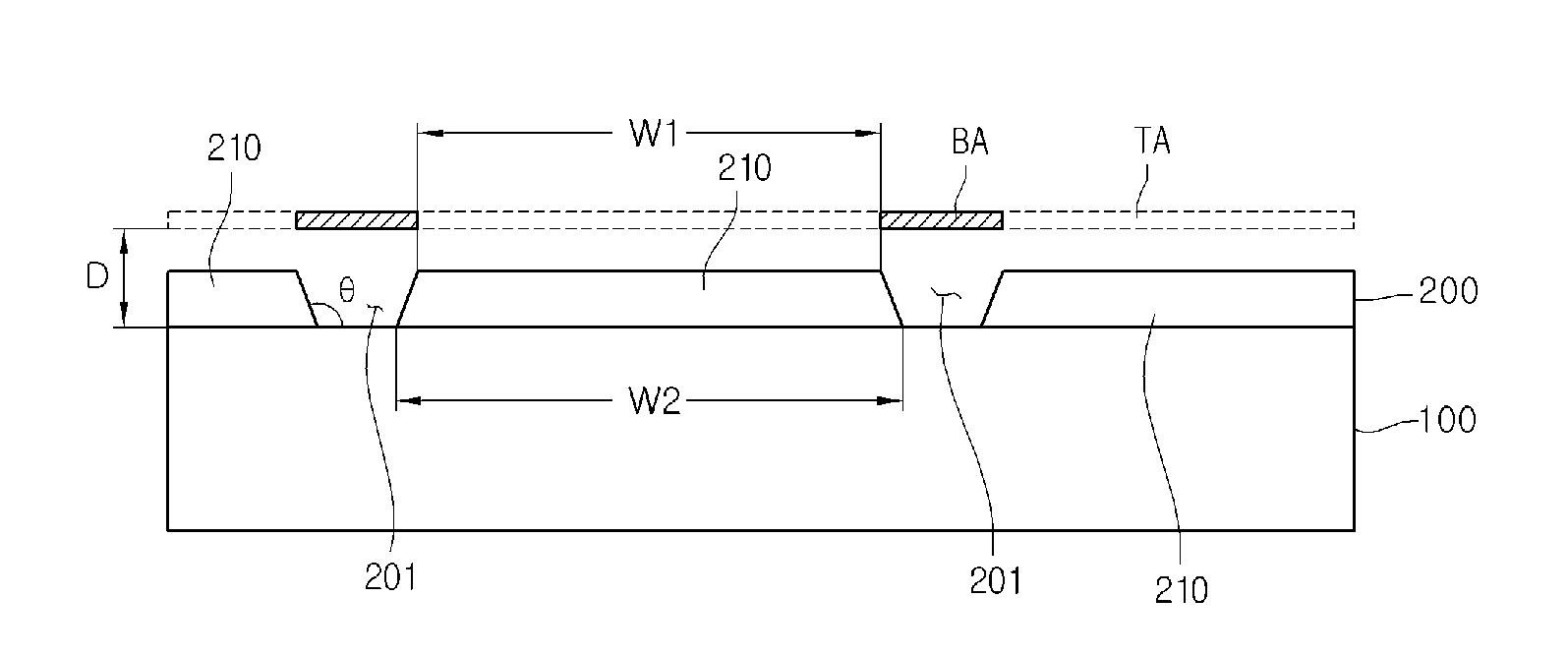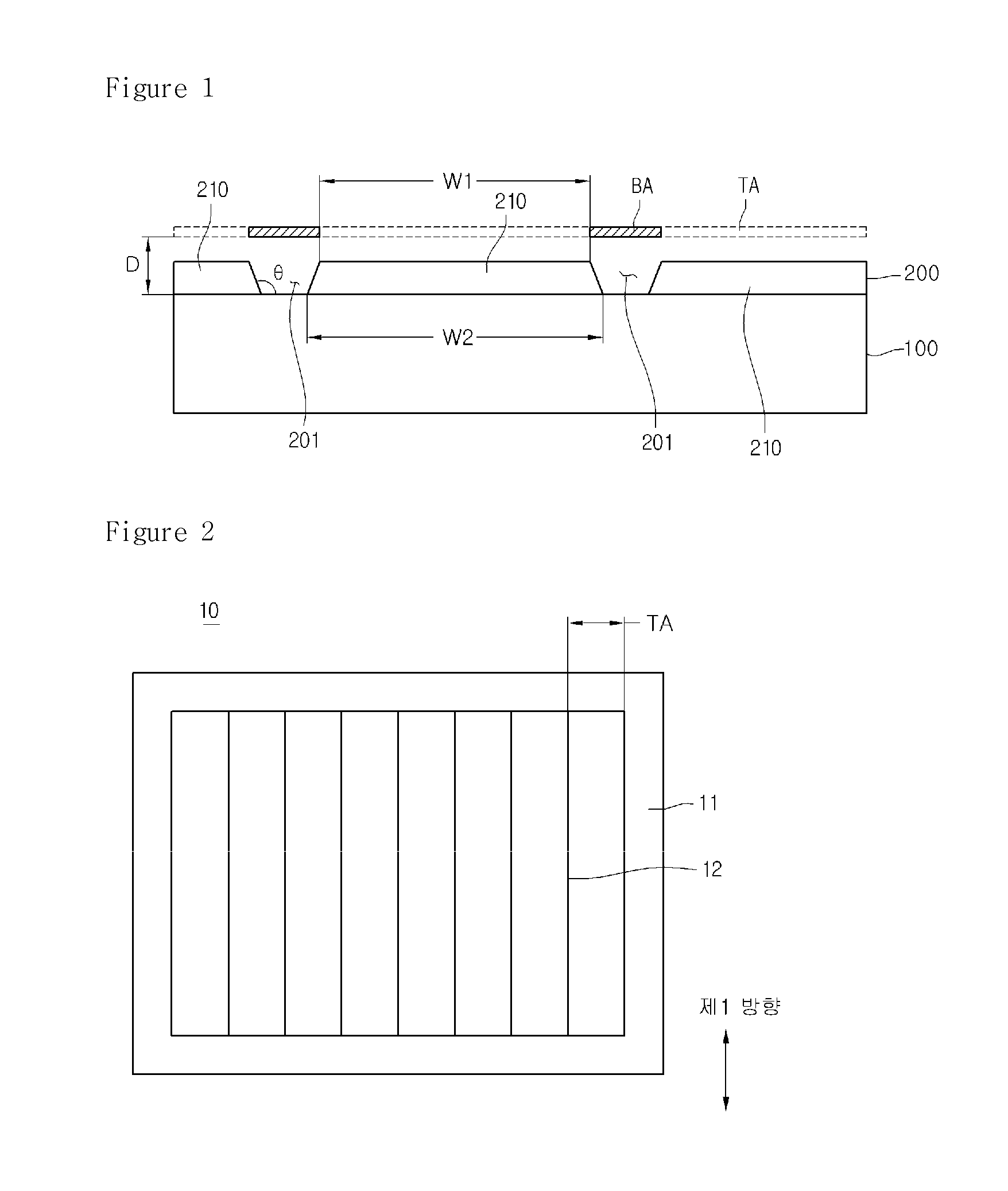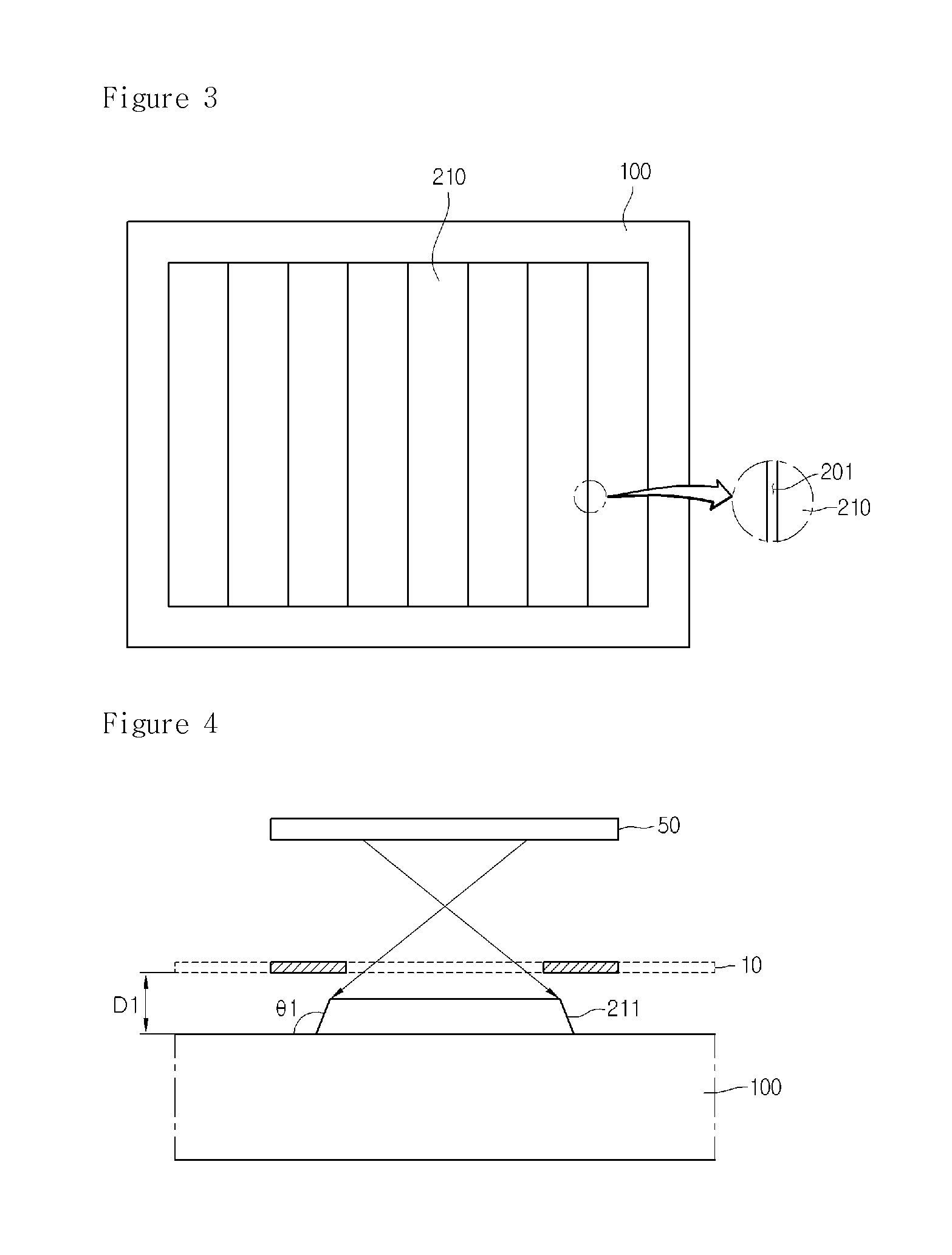Solar cell apparatus and method of fabricating the same
a solar cell and apparatus technology, applied in the field can solve problems such as degrading electrical characteristics of solar cells, and achieve the effects of improving the efficiency of solar cell apparatus, reducing process time, and reducing non-active area naa
- Summary
- Abstract
- Description
- Claims
- Application Information
AI Technical Summary
Benefits of technology
Problems solved by technology
Method used
Image
Examples
first embodiment
[0023]FIGS. 1 and 4 to 9 are cross-sectional views illustrating a method of fabricating a solar cell apparatus according to a FIG. 2 is a plan view illustrating a mask for forming a back electrode layer. FIG. 3 is a plan view illustrating a back electrode layer formed using the mask of FIG. 2.
[0024]Referring to FIGS. 1 and 3, a substrate 100 is prepared, and a back electrode layer 200 is formed on the substrate 100.
[0025]The substrate 100 is formed of glass, or may be formed of ceramic such as alumina, stainless steel, titanium, or polymer. Glass used to form the substrate 100 may be sodalime glass, and polymer used to form the substrate 100 may be polyimide. The substrate 100 may be rigid or flexible.
[0026]A mask 10 is placed on the substrate 100 to form the back electrode layer 200.
[0027]The mask 10 is used to selectively deposit a material on the substrate 100, thereby forming the back electrode layer 200. Referring to FIG. 2, the mask 10 may include a tetragonal frame 11 and a ...
second embodiment
[0087]FIGS. 10 to 12, and 14 to 16 are cross-sectional views illustrating a method of fabricating a solar cell according to a The current embodiment may refer to the previous embodiment. That is, the previous embodiment may be substantially coupled to the current embodiment except for modified parts.
[0088]First, referring to FIG. 10, a preliminary back electrode layer 202 is formed on the substrate 100.
[0089]A substrate 100 is formed of glass, or may be formed of ceramic such as alumina, stainless steel, titanium, or polymer. Glass used to form the substrate 100 may be sodalime glass, and polymer used to form the substrate 100 may be polyimide. The substrate 100 may be rigid or flexible.
[0090]The preliminary back electrode layer 202 is formed of a conductor such as a metal. For example, the preliminary back electrode layer 202 may be formed through a sputtering process using a molybdenum (Mo) target. Mo has high electrical conductivity, an ohmic contact with a light absorption laye...
PUM
 Login to View More
Login to View More Abstract
Description
Claims
Application Information
 Login to View More
Login to View More - R&D
- Intellectual Property
- Life Sciences
- Materials
- Tech Scout
- Unparalleled Data Quality
- Higher Quality Content
- 60% Fewer Hallucinations
Browse by: Latest US Patents, China's latest patents, Technical Efficacy Thesaurus, Application Domain, Technology Topic, Popular Technical Reports.
© 2025 PatSnap. All rights reserved.Legal|Privacy policy|Modern Slavery Act Transparency Statement|Sitemap|About US| Contact US: help@patsnap.com



